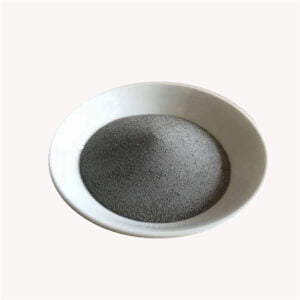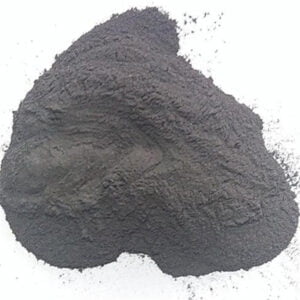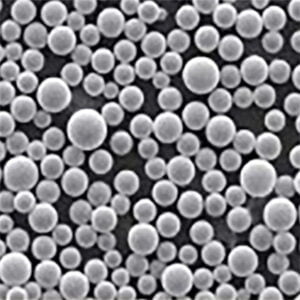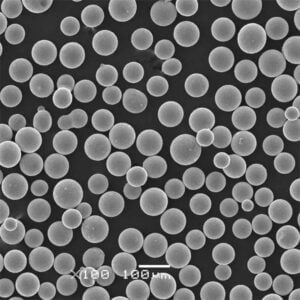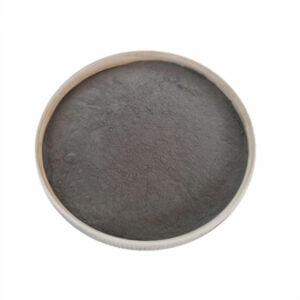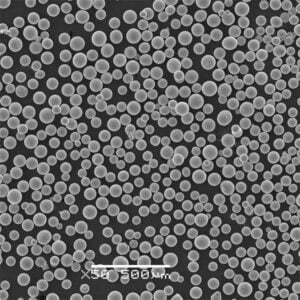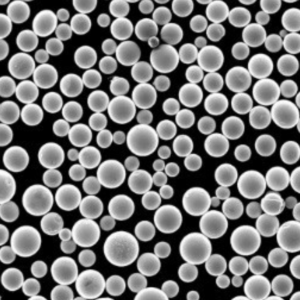Electron Beam Additive Manufacturing (EBAM)
Table of Contents
Overview of Electron Beam Additive Manufacturing (EBAM)
Electron Beam Additive Manufacturing (EBAM) is a cutting-edge 3D printing technology that uses an electron beam to melt and fuse metal powders layer by layer, creating complex and high-strength parts. This process is revolutionizing the manufacturing industry, offering unparalleled precision, reduced waste, and the ability to produce components with intricate geometries that were previously impossible to achieve with traditional manufacturing methods.
EBAM is particularly popular in industries such as aerospace, automotive, and medical devices, where the demand for lightweight yet strong materials is high. By leveraging the power of electron beams, manufacturers can create parts that are not only durable but also highly customized to meet specific design requirements.
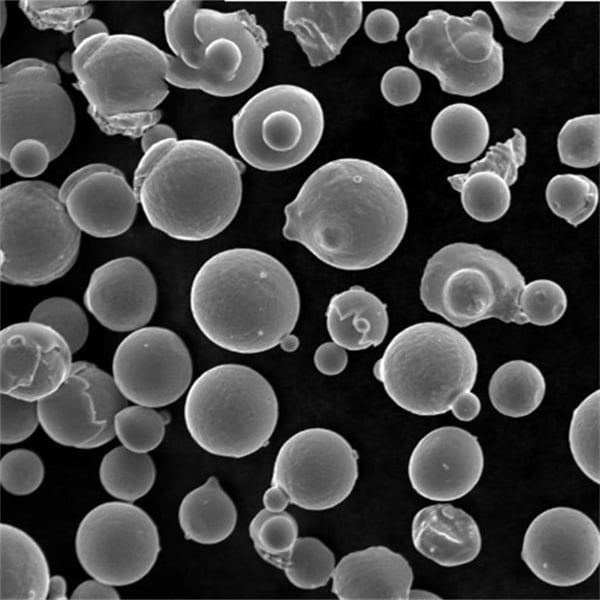
Types of Metal Powders Used in EBAM
When it comes to EBAM, the choice of metal powder is crucial. Different metals and alloys have distinct properties that make them suitable for various applications. Here’s a detailed look at some specific metal powder models used in EBAM:
| Metal Powder Model | Composition | Properties | Applications |
|---|---|---|---|
| Ti-6Al-4V | Titanium, Aluminum, Vanadium | High strength-to-weight ratio, corrosion resistance | Aerospace components, medical implants |
| Inconel 718 | Nickel, Chromium, Iron, Molybdenum | High temperature resistance, excellent mechanical properties | Turbine blades, rocket engines |
| 316L Stainless Steel | Iron, Chromium, Nickel, Molybdenum | Corrosion resistance, good mechanical properties | Surgical instruments, marine equipment |
| AlSi10Mg | Aluminum, Silicon, Magnesium | Lightweight, good thermal conductivity | Automotive parts, heat exchangers |
| CoCrMo | Cobalt, Chromium, Molybdenum | Biocompatibility, wear resistance | Dental implants, orthopedic implants |
| Maraging Steel | Iron, Nickel, Cobalt, Molybdenum | High strength, toughness | Aerospace, tooling, and molds |
| Copper | Pure Copper | Excellent electrical and thermal conductivity | Electrical components, heat sinks |
| Hastelloy X | Nickel, Chromium, Iron, Molybdenum | High temperature and oxidation resistance | Gas turbine engines, chemical processing |
| Niobium | Pure Niobium | High melting point, superconductivity | Superconducting magnets, aerospace |
| Tungsten | Pure Tungsten | High density, high melting point | Radiation shielding, aerospace components |
Properties and Characteristics of Metal Powders in EBAM
| Property | Ti-6Al-4V | Inconel 718 | 316L Stainless Steel | AlSi10Mg | CoCrMo | Maraging Steel | Copper | Hastelloy X | Niobium | Tungsten |
|---|---|---|---|---|---|---|---|---|---|---|
| Density (g/cm³) | 4.43 | 8.19 | 7.99 | 2.67 | 8.29 | 8.0 | 8.96 | 8.22 | 8.57 | 19.3 |
| Melting Point (°C) | 1604-1660 | 1430-1450 | 1375-1400 | 570-580 | 1300-1350 | 1413 | 1084 | 1320-1350 | 2477 | 3422 |
| Tensile Strength (MPa) | 1000-1100 | 1250 | 550 | 330 | 900 | 2000 | 210 | 790-930 | 275 | 1510 |
| Hardness (HV) | 350 | 250 | 140 | 75 | 600 | 350 | 50 | 200 | 80 | 350 |
| Thermal Conductivity (W/mK) | 6.7 | 11.2 | 16 | 151 | 14 | 20.3 | 401 | 11.2 | 53.7 | 173 |
Applications of Electron Beam Additive Manufacturing (EBAM)
EBAM’s unique capabilities make it suitable for a wide range of applications. Here’s how different industries utilize this technology:
| Industry | Application | Benefits |
|---|---|---|
| Aerospace | Turbine blades, structural components | Lightweight, high strength, fuel efficiency |
| Medical Devices | Custom implants, prosthetics | Biocompatibility, precise customization |
| Automotive | Engine parts, lightweight components | Improved fuel efficiency, reduced weight |
| Energy | Turbine components, heat exchangers | High temperature resistance, durability |
| Tooling | Molds, dies | High precision, reduced lead times |
| Electronics | Heat sinks, electrical connectors | Excellent thermal and electrical conductivity |
| Defense | Armor components, specialized equipment | Enhanced protection, lightweight |
Specifications, Sizes, Grades, and Standards in EBAM
Ensuring quality and consistency in EBAM involves adhering to specific standards and grades. Here’s a comprehensive guide to the specifications, sizes, and standards commonly associated with EBAM materials:
| Material | Specifications | Sizes | Grades | Standards |
|---|---|---|---|---|
| Ti-6Al-4V | ASTM B348, AMS 4911 | Powder sizes 15-45 µm | Grade 5, Grade 23 | ASTM F136, ASTM F1472 |
| Inconel 718 | AMS 5662, AMS 5596 | Powder sizes 15-53 µm | AMS 5663, AMS 5596 | ASTM F3055, ASTM B637 |
| 316L Stainless Steel | ASTM A240, ASTM A276 | Powder sizes 10-45 µm | UNS S31603 | ASTM F138, ISO 5832-1 |
| AlSi10Mg | ASTM B209, AMS 4201 | Powder sizes 20-63 µm | Grade A356 | ASTM F3318 |
| CoCrMo | ASTM F75, ISO 5832-4 | Powder sizes 10-45 µm | UNS R31538 | ASTM F1537, ASTM F75 |
| Maraging Steel | AMS 6514, AMS 6520 | Powder sizes 15-53 µm | Grade 250, Grade 300 | ASTM A538, ASTM A646 |
| Copper | ASTM B170, ASTM B152 | Powder sizes 15-45 µm | UNS C11000 | ASTM B837 |
| Hastelloy X | ASTM B572, AMS 5536 | Powder sizes 15-53 µm | UNS N06002 | ASTM F3317, ASTM F3055 |
| Niobium | ASTM B392, ASTM B393 | Powder sizes 20-60 µm | Grade 1 | ASTM F2063, ISO 683-13 |
| Tungsten | ASTM B760, ASTM B777 | Powder sizes 5-45 µm | UNS W73100 | ASTM F2885 |
Suppliers and Pricing Details of EBAM Metal Powders
Sourcing high-quality metal powders is essential for successful EBAM. Here’s a list of some prominent suppliers along with approximate pricing details:
| Supplier | Material | Price (USD/kg) | Region |
|---|---|---|---|
| Carpenter Technology | Ti-6Al-4V | $300-500 | USA |
| Sandvik | Inconel 718 | $150-250 | Europe, North America |
| Höganäs | 316L Stainless Steel | $30-50 | Global |
| ECKART | AlSi10Mg | $60-80 | Europe, Asia |
| Oerlikon | CoCrMo | $200-350 | Global |
| Carpenter Technology | Maraging Steel | $100-200 | USA |
| GKN Additive | Copper | $50-70 | Europe, North America |
| Praxair | Hastelloy X | $250-400 | Global |
| American Elements | Niobium | $1000-1500 | USA, Europe |
| HC Starck | Tungsten | $150-300 | Global |
Advantages of Electron Beam Additive Manufacturing (EBAM)
EBAM offers numerous benefits that make it a preferred choice for many manufacturing applications:
- High Precision: EBAM allows for the creation of highly detailed and intricate parts that are difficult to achieve with traditional methods.
- Reduced Waste: The additive process ensures minimal material wastage, making it a more sustainable option.
- Customization: EBAM is ideal for producing customized parts, especially in industries like medical devices where patient-specific implants are required.
- Strength and Durability: Parts produced through EBAM typically exhibit superior mechanical properties and are highly durable.
- Complex Geometries: The technology enables the manufacturing of complex geometries that are often impossible to produce using conventional methods.
Disadvantages of Electron Beam Additive Manufacturing (EBAM)
Despite its many advantages, EBAM also has some limitations:
- High Initial Costs: The setup cost for EBAM systems can be quite high, making it less accessible for small-scale manufacturers.
- Material Limitations: Not all materials are suitable for EBAM, which can limit its application scope.
- Post-Processing Requirements: Parts often require significant post-processing to achieve the desired surface finish and dimensional accuracy.
- Complexity in Operation: Operating EBAM systems requires specialized knowledge and training, adding to the operational complexity.
Comparing EBAM to Other Additive Manufacturing Technologies
| Parameter | EBAM | Laser Additive Manufacturing | Selective Laser Sintering (SLS) | Fused Deposition Modeling (FDM) |
|---|---|---|---|---|
| Precision | High | Very High | Moderate | Low |
| Material Waste | Low | Low | Moderate | High |
| Material Range | Limited | Extensive | Extensive | Extensive |
| Initial Cost | High | High | Moderate | Low |
| Surface Finish | Requires Post-Processing | Requires Post-Processing | Good | Poor |
| Operational Complexity | High | High | Moderate | Low |
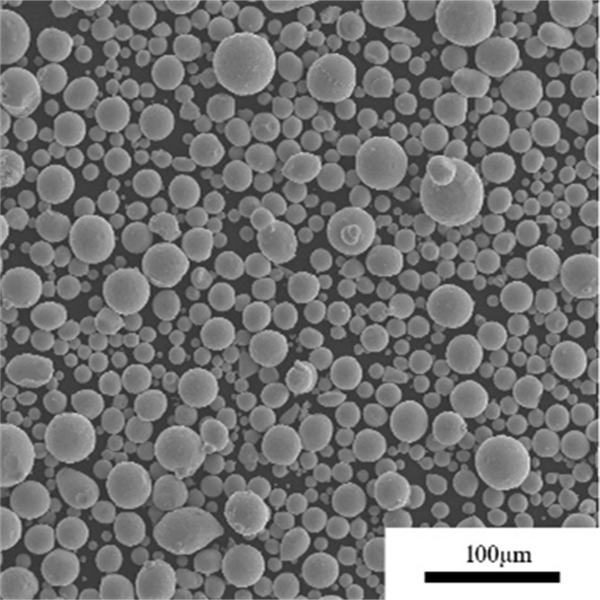
FAQs
| Question | Answer |
|---|---|
| What is EBAM? | Electron Beam Additive Manufacturing, a 3D printing technology that uses electron beams to melt and fuse metal powders. |
| What metals can be used in EBAM? | Various metals such as Ti-6Al-4V, Inconel 718, 316L Stainless Steel, and more. |
| What are the advantages of EBAM? | High precision, reduced waste, customization, strength, and ability to create complex geometries. |
| Are there any disadvantages to EBAM? | High initial costs, material limitations, post-processing requirements, and operational complexity. |
| How does EBAM compare to other 3D printing methods? | EBAM offers high precision and low waste but has higher costs and complexity compared to methods like FDM. |
| What industries benefit from EBAM? | Aerospace, medical devices, automotive, energy, tooling, electronics, and defense. |
| What are the key properties of EBAM materials? | Density, melting point, tensile strength, hardness, and thermal conductivity. |
| How is EBAM different from Laser Additive Manufacturing? | EBAM uses electron beams while Laser Additive Manufacturing uses laser beams. |
| What post-processing is needed for EBAM parts? | Surface finishing and dimensional accuracy adjustments are often required. |
| Is EBAM environmentally friendly? | Yes, due to its minimal material waste and efficient use of resources. |
Share On
MET3DP Technology Co., LTD is a leading provider of additive manufacturing solutions headquartered in Qingdao, China. Our company specializes in 3D printing equipment and high-performance metal powders for industrial applications.
Inquiry to get best price and customized Solution for your business!
Related Articles
About Met3DP
Recent Update
Our Product
CONTACT US
Any questions? Send us message now! We’ll serve your request with a whole team after receiving your message.

Metal Powders for 3D Printing and Additive Manufacturing
COMPANY
PRODUCT
cONTACT INFO
- Qingdao City, Shandong, China
- [email protected]
- [email protected]
- +86 19116340731







